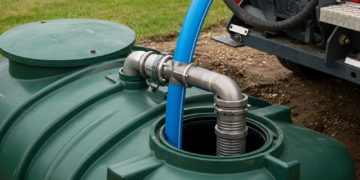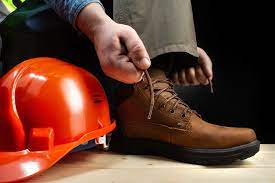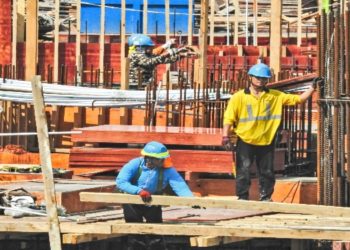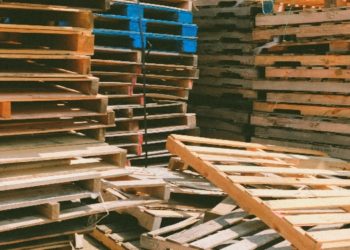Your feet probably feel like they’ve gone ten rounds with a heavyweight boxer by the end of the day. It’s a feeling a lot of us in demanding jobs know all too well. Choosing safety shoes feels like a chore, but it’s one of the most important gear decisions you’ll make. This isn’t just about ticking a box for your boss; it’s about your own comfort and protection day in and day out. The right pair makes a huge difference, so getting the process of choosing safety shoes right from the start is a game-changer.
Think of your safety footwear as the foundation for your entire workday. If your feet are hurting, everything feels off. You lose focus, you’re less productive, and honestly, you’re just plain miserable. We’ve all been there, trying to save a few bucks on a cheap pair of boots only to regret it a week later.
You’ll learn how to pick footwear that not only meets safety standards but also feels good on your feet. No more guesswork or buyer’s remorse. Let’s get you into a pair of shoes that works as hard as you do. Check out Trade Work Wear for a range of really high quality safety boots and shoes.
First, Let’s Talk About Your Job’s Dangers
Before you even look at a shoe, you have to look at your job site. What are the actual risks you face every single day? A carpenter has very different needs than an electrician or a warehouse worker.
Thinking this through is the most critical first step. It guides every other decision you’re about to make. Don’t just assume all safety shoes are the same, because they absolutely are not.
Are Falling Objects a Real Threat?
Look around your worksite. Is there a chance something heavy could fall or roll onto your feet? This happens a lot in construction, manufacturing, and warehouse jobs.
If the answer is yes, you absolutely need a protective toe cap. This non-negotiable feature is designed to protect your toes from impact and compression. The official standards set by organizations like ASTM International test for this exact scenario.
What’s Under Your Feet?
Now, look down. Are there stray nails, sharp pieces of metal, or jagged rocks on the ground? This is a huge risk in demolition, construction, and waste management.
If you’re stepping on sharp objects, you need a puncture-resistant plate. This is a special layer built into the midsole of the shoe. It stops sharp things from going right through the sole and into your foot.
Working with Electricity
For electricians or anyone working near live circuits, this part is critical. Your footwear is a key piece of your personal protective equipment. You need safety shoes specifically designed to protect you from electrical shock.
These shoes are marked with ‘EH’ for Electrical Hazard. They’re made with non-conductive materials to insulate you from the ground. This could literally be a life-saving feature.
Slippery Surfaces Everywhere
Slips, trips, and falls are some of the most common workplace injuries, according to the Bureau of Labor Statistics. Is your work environment wet, oily, or just generally slick? Think about restaurant kitchens, automotive garages, or food processing plants.
If so, slip resistance is your number one priority. You need to look for shoes with outsoles specifically designed for traction. The pattern of the tread and the rubber compound used can make a world of difference.
Breaking Down the Confusing Labels
You’ve probably seen a long string of letters and numbers on the tongue of a safety boot and wondered what it all means. It looks like a secret code, but it’s actually a report card for the shoe. It tells you exactly what kind of protection it offers based on ASTM F2413 standards.
Understanding this code is your key to making a smart choice. Once you know what to look for, you can tell in seconds if a boot meets your job’s requirements.
| ASTM Code | What It Means |
| I/75 | Impact Resistance. The toe cap protects against a 75-pound object dropped from a set height. |
| C/75 | Compression Resistance. The toe cap can withstand 2,500 pounds of rolling pressure. |
| PR | Puncture Resistant. The shoe has a plate in the sole to protect from sharp objects from below. |
| EH | Electrical Hazard. It gives protection against live electrical circuits on dry surfaces. |
| SD | Static Dissipating. It reduces the buildup of static electricity, which is important when working around sensitive electronics. |
| Mt/75 | Metatarsal Guard. This gives extra protection for the top of your foot, beyond just the toes. |
So, a shoe marked ‘ASTM F2413-18 M/I/75/C/75/PR’ tells you it meets the 2018 standard for men, has the highest rating for impact and compression, and is also puncture resistant. See? Not so scary once you break it down.
The Great Toe Debate: Steel vs. Composite vs. Alloy
The safety toe is the heart of a safety shoe. For years, steel was the only option, but now you have choices. Each type has its own pros and cons, and the right one for you depends on your job and personal preference.
Let’s be clear, all approved safety toes must meet the same ASTM standard for impact and compression. One is not technically ‘safer’ than the other in a test. But they do feel and function differently in the real world.
Classic Steel Toes
Steel toes are the original safety toe. They are made from heavy-duty steel and do a fantastic job of protecting your feet. Because steel is so strong, the cap can be made thinner, so the boot profile is sometimes less bulky.
The main drawback is weight. Steel is heavy, and that can lead to more fatigue at the end of a long day. It also conducts temperature, so your feet might get colder in the winter and hotter in the summer.
Modern Composite Toes
Composite toes are made from non-metal materials like carbon fiber, plastic, or Kevlar. Their biggest advantage is that they’re lightweight. This can make a huge difference in comfort if you’re on your feet all day.
Since they contain no metal, they don’t conduct heat, cold, or electricity. This makes them a great choice for people who work in extreme temperatures or have to pass through metal detectors frequently. They are usually a bit thicker than a steel toe to provide the same protection.
Light and Strong Alloy Toes
Alloy toes are a middle ground. They are made from lightweight materials like aluminum or titanium. They offer the same protection as steel but at a fraction of the weight.
They are generally thinner than composite toes, giving you a less bulky boot. The main downside is that they are often the most expensive option. But for many, the combination of lightweight protection and a streamlined fit is worth the price.
What the Rest of the Shoe is Made Of
A safety shoe is more than just a toe cap. The materials used in the upper part of the shoe and the construction of the sole are just as important. They determine the shoe’s durability, comfort, and how well it stands up to your specific work environment.
Uppers: Leather vs. Synthetic
The upper is everything above the sole. Full-grain leather is a popular choice because it’s naturally durable, breathable, and water-resistant. Over time, it will conform to the shape of your foot, giving you a custom fit.
Synthetic materials, like nylon or microfiber, also have their advantages. They are often lighter than leather and need less time to break in. Many synthetic uppers offer better water protection or chemical resistance depending on their specific makeup.
Soles and How They’re Attached
The outsole is the part that hits the ground. Rubber is great for slip and oil resistance. Polyurethane (PU) soles are lightweight and comfortable, while thermoplastic polyurethane (TPU) soles are known for being very tough and long-lasting.
How the sole is attached also matters. A cement construction, where the sole is glued on, is flexible and light. A Goodyear welt construction, where the sole is stitched on, is incredibly durable and lets you resole the boots, extending their life.
A Practical Guide for Choosing Safety Shoes that Fit Right
This is my favorite part because it’s where I see people make the most mistakes. You can buy the most expensive, feature-packed boot in the world, but if it doesn’t fit correctly, it’s useless. An ill-fitting boot can cause blisters, foot pain, and even long-term problems.
The research from groups like the American Podiatric Medical Association consistently shows the importance of proper footwear. Don’t rush this process. A few extra minutes in the store can save you months of pain.
Shop at the End of the Day
Your feet naturally swell throughout the day. If you try on shoes in the morning, they might feel too tight by the time you’re halfway through your shift. Always shop for work boots in the afternoon or evening to get the most accurate fit.
Wear Your Work Socks
Don’t try on safety shoes with thin dress socks. Bring the actual thick, cushioned socks you wear to work. They make a big difference in how a shoe fits.
Check the Length and Width
There should be about half an inch of space, or a thumb’s width, between your longest toe and the end of the boot. Make sure the toe box is wide enough so your toes don’t feel cramped. You should be able to wiggle them freely inside the safety cap.
Walk Around and Test Them
Don’t just sit down. Stand up and walk around the store for a few minutes. Your heel should not slip up and down as you walk. A little movement is okay, but it shouldn’t be rubbing constantly.
Okay, we’ve covered a lot of ground here. We started with your specific job hazards and then moved on to decoding labels, comparing toe types, and checking construction materials. We finished with the all-important task of getting the fit just right. It might seem like a lot to remember, but it really boils down to one simple idea. Proper choosing of safety shoes is about making a careful, informed decision, not a quick one.












































































